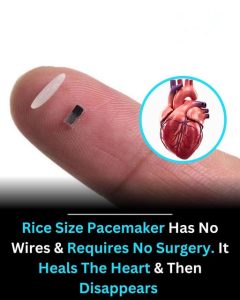A pacemaker helps the heart maintain a proper and regular beat by delivering electrical signals to its chambers. Millions of lives have been saved since the initial fully implanted pacemaker was used on a patient in 1958. That was when cardiac care entered a new phase of development. Over many years, pacemakers have been improved in many ways. They are now smaller, more advanced and more successful at detecting and handling different arrhythmias.
Get this: scientists now have a pacemaker that is the smallest ever built, smaller than a grain of rice! This device is very small and also marks a significant improvement in medical technology. Unlike regular pacemakers which have to be surgically put in and left in the body always, this one is intended to only be used temporarily.

The pacemaker is fitted within the body and remote commands from light are received through the skin. With age, the leads of a cardiac pacemaker wear away which gets rid of the leads inside the body, sparing patients the major risks involved in extracting old pacemakers.
While this new pacemaker is not yet ready for use in humans because it is only in experimental stages, it has already been noticed by doctors worldwide. Many experts say this advancement could make cardiac care safer and more adaptable. Because it is temporary, this device could help people who had surgery or patients with arrhythmias lasting only a short time.
At present, there are many people worldwide using permanent pacemakers to manage the health of their hearts. For them, handling the surgery itself, needing more surgeries and facing possible issues is a real challenge.
Because these burdens were difficult for patients, the creators of this novel pacemaker strove to make them fewer. They wanted to develop a device that could work as a life-saving aid but would not leave anything permanently inside people.
This shows how advanced medicine has become and how much more advancement is possible. Further work may eventually allow the tiny pacemaker to offer less risky, less invasive options for managing heart rhythm and advancements could impact millions of patients worldwide.
